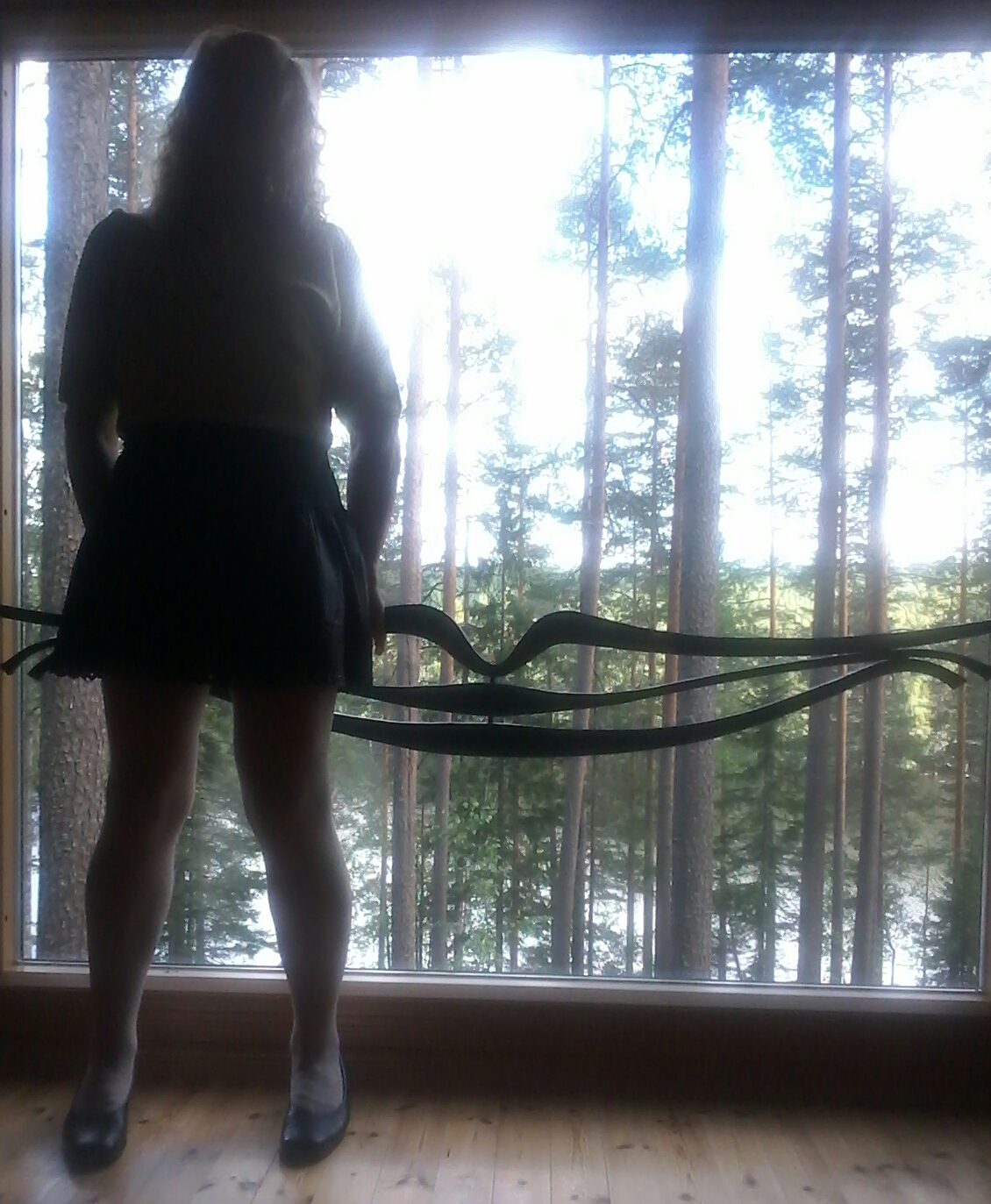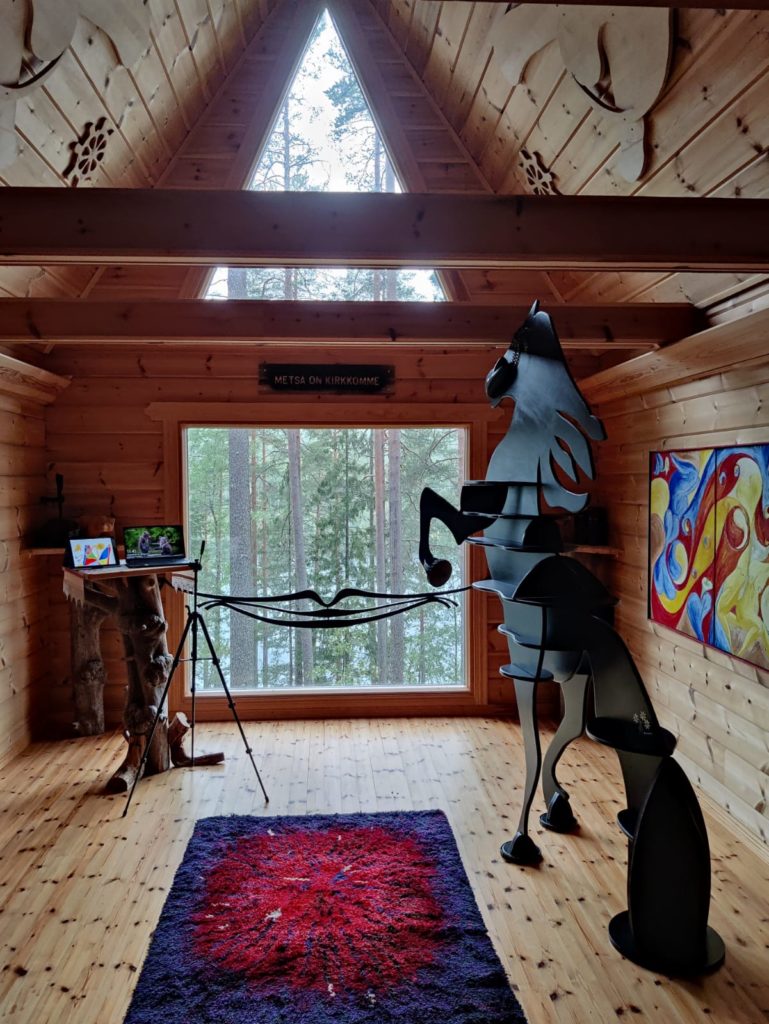
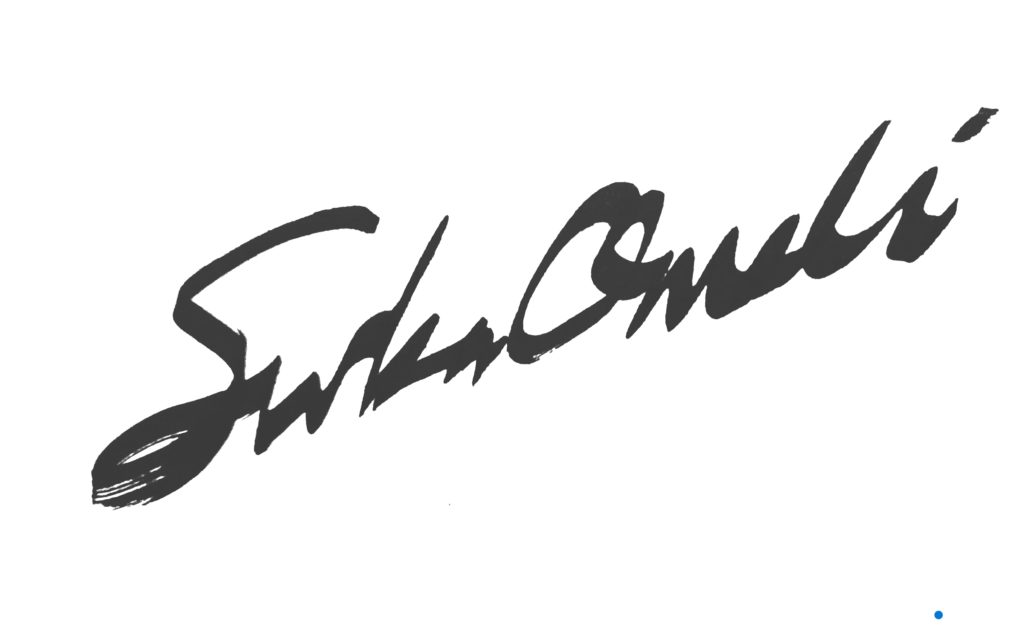
”The beginning is the most important part of the work.” (Platon)
”Science needs the intuition and metaphorical power of the arts, and the arts need the fresh blood of science.”(Erward.O.Wilson)
”Nothing cannot exist forever.” (Stephen Hawking)
”Intelligence is the ability to adapt to change.” (Stephen Hawking)
”I am always doing that which I cannot do, in order that I may learn how to do it.” (Pablo Picasso)
”How can you buy or sell the sky, the warmth of the land?” (Chief Seattle)
”Kaikessa tekemisessä alku on tärkein.” (Platon)
”Tiede tarvitsee taiteen intuitiota ja vertauskuviin perustuvaa voimaa ja taide tarvitsee tieteen tuoretta verta.”(Erward.O.Wilson)
”Mikään ei voi olla ikuisesti.” (Stephen Hawking)” Älykkyys on kykyä sopeutua muutokseen.” (Stephen Hawking)
”Älykkyys on kykyä sopeutua muutokseen.” (Stephen Hawking)
”Teen aina sitä, mitä en voi tehdä, jotta voin oppia tekemään sen.” (Pablo Picasso)
”Kuinka kukaan voi ostaa tai myydä taivasta yläpuolellamme tai maan lämpöä?” (Intiaanipäällikkö Seattle)
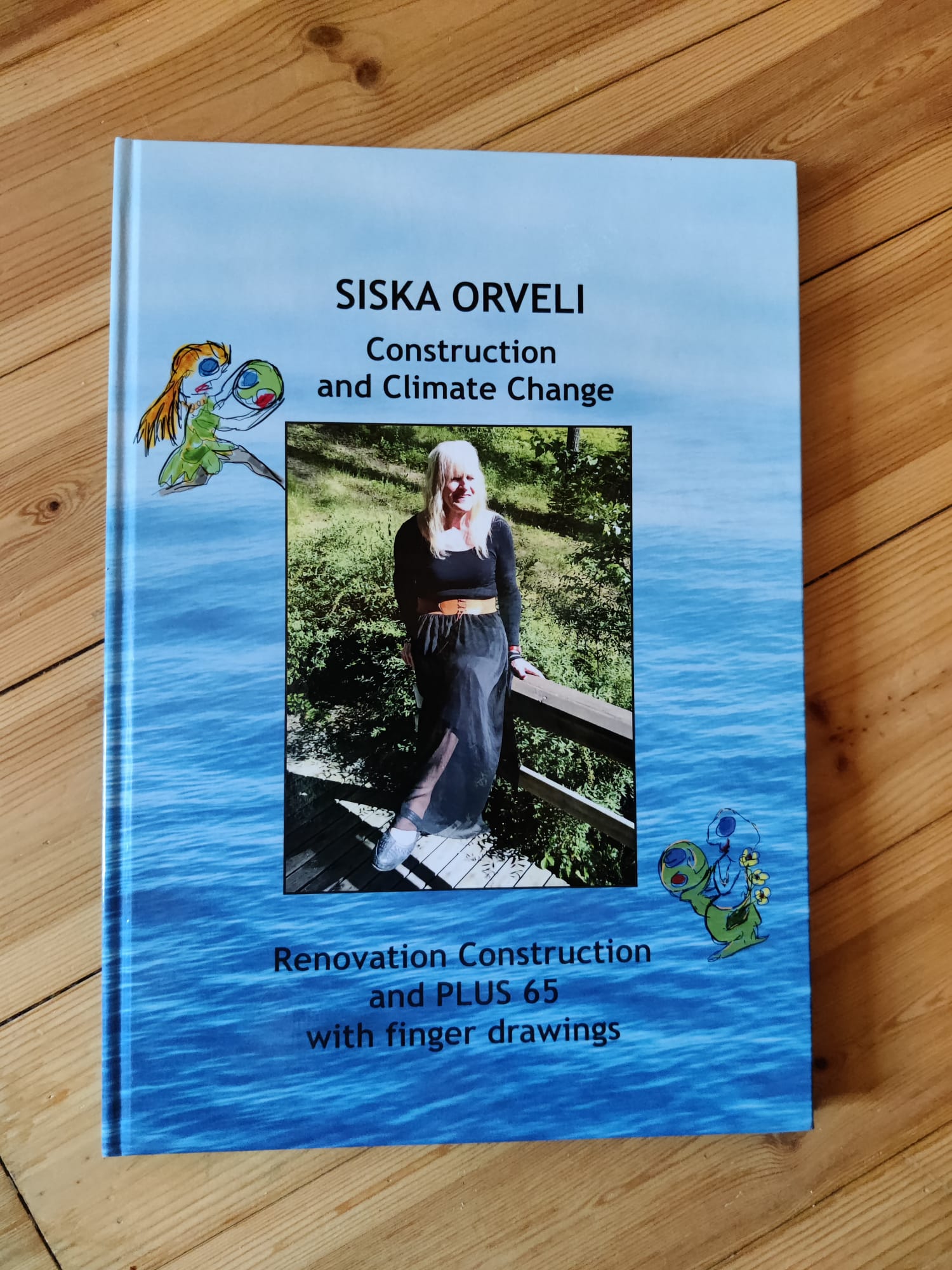
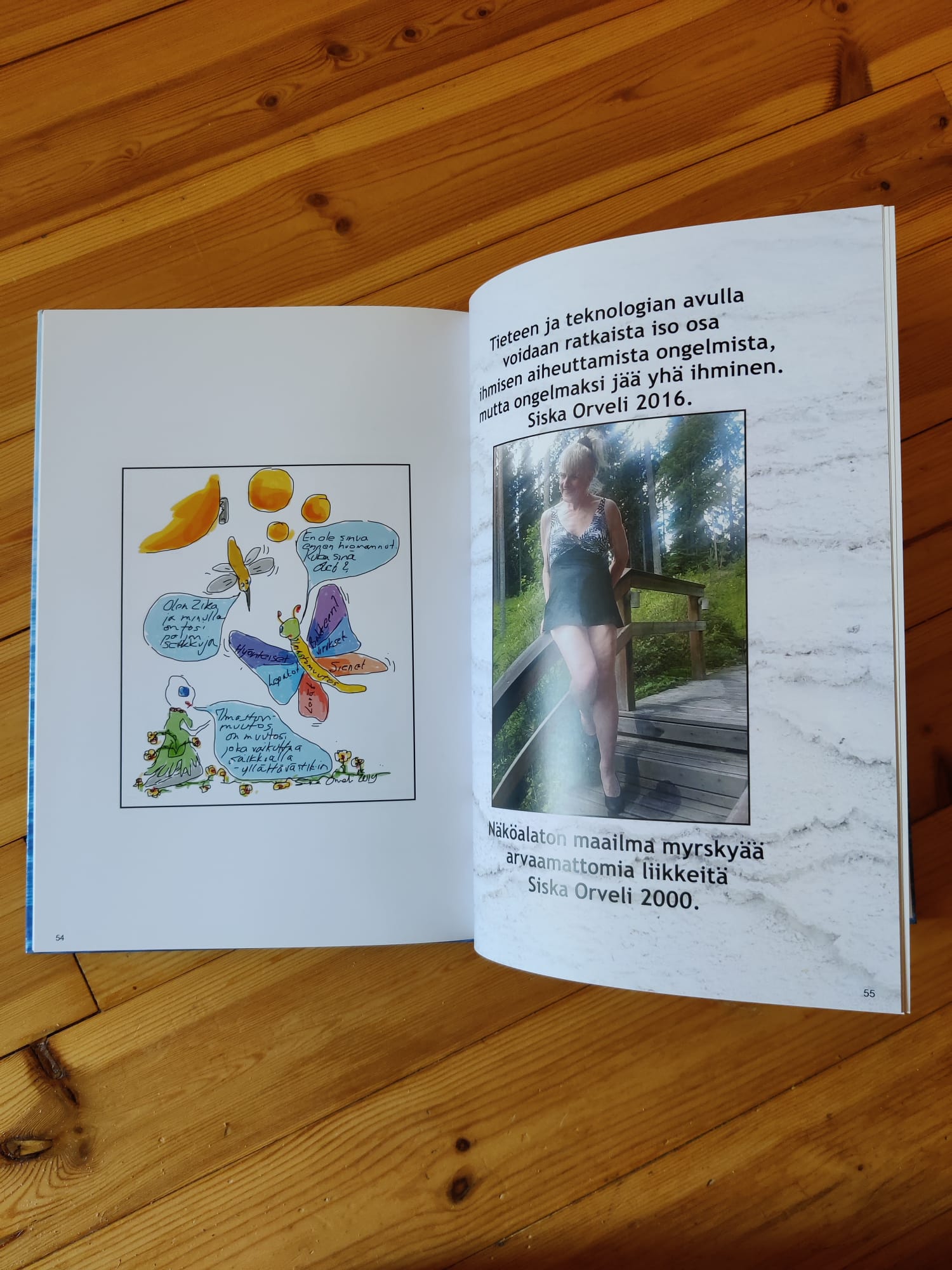
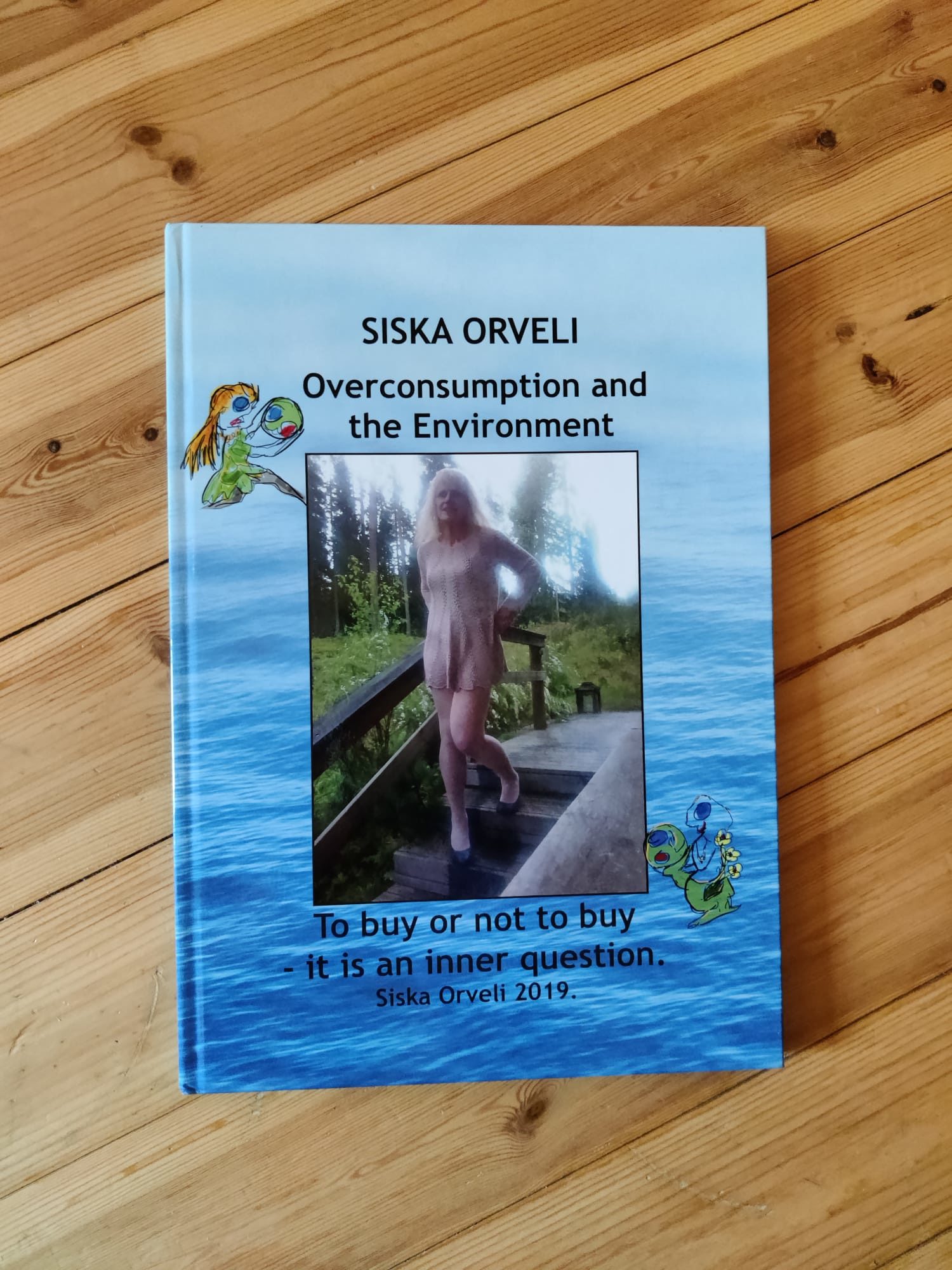
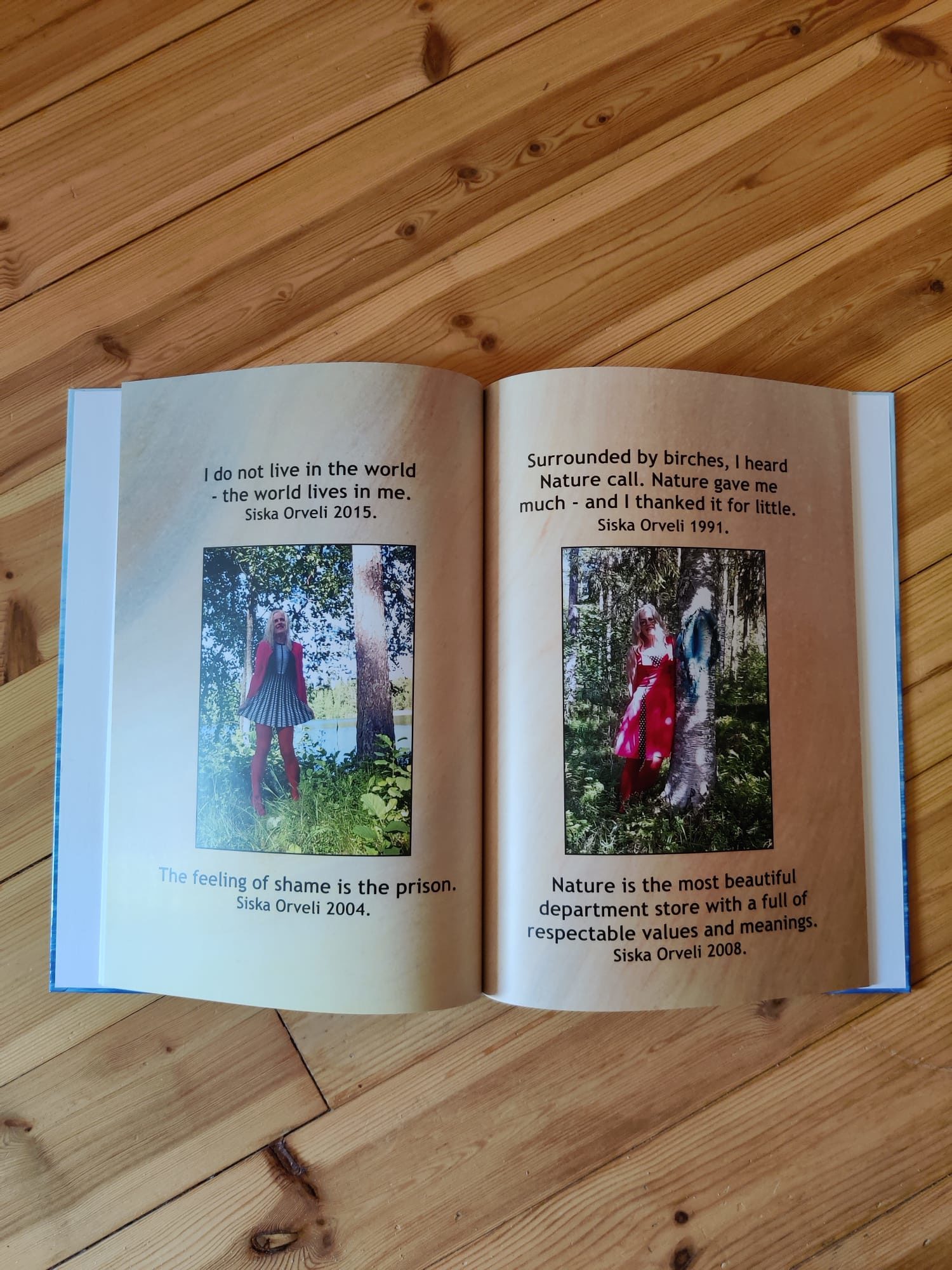
THE CONSILIENCE OF ART AND SCIENCE IN THE LIVING ENVIRONMENT AS A FORCE OF SURVIVAL
Siska, research
The beginning is the most important part of the work.” (Platon)
The consilience of art and science has fascinated me for decades. I have encountered (and blundered into) this amazing consilience in various crossroads of art and science in different fields, ranging from culture to heavy industry. It has been interesting to analyze this subject in varying frames of reference; Tibetan Buddhism, the ruins of colonialism in Africa, the native people of the Amazon, the development of the Finnish welfare state, and the former colonial empire of Portugal. The consilience of art and science has several faces and a multitude of different methods. Consilience forms the common ground between science and art in everything and everywhere. For me, consilience is evident in everyday creativity. The consilience of art and science is, above all else, a tool of survival. As a tool, it creates a flexible path for solving several massive global issues, the ever-approaching ecological disaster being the most dangerous one. I would like to explore this tool’s shape and evolution as a factor of survival in former and current societies, as well as during the collapse of old structures.
The research will employ a wide methodological part, and it will also be done in a ‘learning by doing’ application and as “copies” in an ongoing project—a centre for science, culture and nature that is being constructed in Algarve, Portugal. The research will follow the project from the development phase to implementation, and its later stages. The project is at the final stop of my life. This project will receive information and expertise about the connection between art and science, and about the impact of this consilience on the welfare of our environment and the survival of life in its current, turbulent state. The task will be accomplished by researching and applying past and current crossroads of art and science in various fields, while also taking future developments into consideration.
The consilience of art and science encompasses the entire Earth; thus, from the viewpoint of this research, I will approach it from the context of mankind, nature, and culture in a single, constructed environment—as a part of periphery modernism. This project facilitates the research, application, and implementation of the consilience of art and science in a delineated area, where content relevant to the research is employed.
This research’s subject is ”The Consilience of Art and Science in the Living Environment as a Force of Survival”. The research concept has been illustrated verbally and with pictures in appendix 1a. It displays the research via means of art, creating an aesthetic tool for exploring the consilience of art and science. The displayed thought process is based on a quality manual written by the researcher; the manual employs design management elements and a metaphor of a butterfly’s life cycle (appendix 1 i). It includes verbal acrobatics against the background of serious research. In the included picture, the researcher assumes the role of a small butterfly admiring the grace of a larger butterfly as it glides over a diverse landscape and extends the reach of its wings to societal and global divisions. The journey towards understanding the role of the consilience of art and science in the living environment as a force of survival requires the clarification of the research’s goals and partial goals. This research challenges the researcher into constructing an encompassing, multidisciplinary research method in a veritable forest of pre-existing research methods. It is difficult to place the research into a stable state, since it resembles a message written into the sails of a storm-strewn ship—however, the sea can only be crossed in a durable vessel. The consilience of art and science should be considered an entity in itself: it is the sea, with its various known and unknown characteristics.
The researcher is challenging himself and exploring his mental landscape. The explorer challenges the boundaries of the philosophy of science with an unorthodox combination of several research methods and by analyzing data—especially tacit data—with an open, cooperational, and engaging operating model. The researcher pools and filters data according to qualified, ethical rules of fair play while emphasizing the role of the consilience of art and science in the living environment as a force of survival.
The researcher emphasizes the importance of everyday creativity in all functions of life. The consilience of art and science answers the challenge of getting every member of society to work towards a common goal. This consilience offers a space and path for reaching individual goals, as well as a channel for shared environmental efforts.
The researcher is constantly surrounded by new communication channels throughout the research process, welcoming and applying the ever increasing influence of social media and completely new communication channels. The scientific value of the research will be illustrated for everyone. The research chamber will be illuminated by a door opened by the hands of art and science.
The consilience of art and science has been a surprisingly rare research subject. Most references towards their connection are brief mentions regarding polymaths and the crossroads of different scientific fields. It has received some attention in the field of digitalization and artificial intelligence. There are no extensive researches about the subject.
TAITEEN JA TIETEEN KONSILIENSSI ELINYMPÄRISTÖSSÄ SELVIYTYMISEN VOIMATEKIJÄNÄ
Siska, tutkimustyö
Kaikessa tekemisessä alku on tärkein.” (Platon)
Taiteen ja tieteen konsilienssi on kiehtonut minua vuosikymmenten ajan. Olen törmännyt ja törmäillyt tähän houkuttelevaan konsilienssiin eri yhteyksissä taiteen ja tieteen risteysasemilla eri puolilla maailmaa kulttuurista raskaaseen teollisuuteen. Varsin mielenkiintoista on ollut aihealueen tarkkailu erityisesti Tiibetin buddhalaisuuden, Afrikan kolonialismin raunioiden, Amazonin alkuperäiskansojen ja suomalaisen hyvinvointiyhteiskunnan kehittymisen sekä entisen kolonialistisen suurvallan Portugalin viitekehyksessä. Taiteen ja tieteen konsilienssi näyttäytyy moninaisin kasvoin ja toteutuu mitä erilaisimmin käsin. Konsilienssi on taiteen ja tieteen yhteistä kivijalkaa kaikessa ja kaikkialla. Konsilienssi on minulle arkea ja arjen luovuutta. Taiteen ja tieteen konsilienssi on ennen kaikkea selviytymisen väline. Tämä väline on joustava polku ratkaistaessa massiiviseksi muodostuneita globaaleja ongelmia, joista suurin on lähestyvä ekologinen katastrofi. Tämän välineen muotoa ja muotoutumista haluaisin tutkia tarkemmin niin entisen kuin uuden yhteiskunnan yhtenä elinympäristössä selviytymisen tekijänä ja nyt, vanhojen rakenteiden murtuessa, elinympäristössä selviytymisen voimatekijänä.
Tutkimus suoritetaan laajaan metodologiseen osioon tukeutuvana tutkimuksena sekä samanaikaisesti ”learning by doing-periaatteella” -sovelluksina ja ”kopioinakin” elävässä hankkeessa – konkreettisessa Portugalin Algarveen rakennettavassa tiede-, kulttuuri – ja luontokeskuksessa sen suunnitteluvaiheesta toteutukseen ja myöhemmin hankeen elämässä. Tuo hanke on elämäni päätepysäkillä. Tuohon hankkeeseen kumuloidaan tietoa ja taitoa taiteen ja tieteen yhteisyydestä sekä tämän konsilienssin vaikutuksista ympäristömme hyvinvointiin ja elämän selviytymiseen sen nykyisessä, turbulenssissa tilassa. Tehtävä suoritetaan tutkimalla ja soveltaen moniulotteisia taiteen ja tieteen sekä näitä yhdistäviä oppeja niin historiasta kuin nykyisyydestä kurkistellen herkkyydellä ja uteliaisuudella kulman taakse – tulevaisuuteen.
Taiteen ja tieteen konsilienssi on koko maailma, joten tutkimusnäkökulmasta voin keskittyä sen merkitykseen vain kontekstissa ihminen, luonto ja kulttuuri puhtaan luonnon keskellä yksittäisessä rakennetussa ympäristössä – osana syrjäseutujen modernismia. Tässä hankkeessa on mahdollista tutkia, soveltaa ja toteuttaa taiteen ja tieteen konsilienssia rajatulla alueella tutkimuksen edistymisen ohjaamalla sisällöllä.
Tutkimuksen aiheena on ” Taiteen ja tieteen konsilienssi elinympäristössä selviytymisen voimatekijänä”, The consensus of art and science in the living environment as a force of survival”. Tutkimuskokonaisuus on esitetty sanoin ja kuvin liitteessä 1a. Tässä tutkimus avautuu tutkijalle taiteen keinoin luoden esteettisen välineen tieteen ja taiteen konsilienssin tutkimiseen. Tämä ajattelu perustuu tutkijan kirjoittamaan laatukäsikirjaan, joka on rakennettu design management -elementein perhosen elinkaareksi, liite 1 i. Tässä on mukana sanoilla herkuttelua, vaikka tausta on vakavaa tutkimusta. Kuvassa pienen perhosen hahmossa oleva tutkija – tekijä kummastelee ison perhosen hurmaavuutta sen liitäessä moniravinteisen maiseman yllä ulottaen siiven iskunsa yhteiskunnallisiin ja globaaleihin ulottuvuuksiin. Matka taiteen ja tieteen konsilienssin ymmärtämiseen elinympäristössä selviytymisen tekijänä vaatii tutkimuksen tavoitteiden ja osa – tavoitteiden täsmentämistä. Tutkimus haastaa tutkijan laajan ja monialaisen tutkimusaineiston käsittelyyn soveltuvan tutkimusmenetelmän rakentamiseksi lukuisten olemassa olevien tutkimusmenetelmien viidakossa. Tutkimusta on vaikea asettaa vakaaseen tilaan. Tutkimus on enemmänkin myrskyjen repimän purjealuksen purjeisiin kirjoitettu viesti. Sen tulkinta on kiinni ajassa, paikassa ja tutkijan mielessä. Meren voi kuitenkin ylittää vain kestävällä laivalla. Tieteen ja taiteen konsilienssi on kokonaisuus. Taiteen ja tieteen ykseys on meri monine tiedettyine ja arvaamattomine piirteineen.
Tutkija haastaa itsensä ja tutkii mielensä maisemaa. Tutkija kyseenalaistaa tieteenfilosofian rajoja yhdistämällä epäsovinnaisesti eri tutkimusmenetelmiä sekä käsittelemällä tietoa, etenkin hiljaista tietoa, avoimella, yhteistyöhakuisella ja keskustelevalla toimintamallilla. Tutkija ammentaa ja suodattaa tietoa hyväksyttyjen eettisten fair-play sääntöjen mukaisesti, kuitenkin painottaen taiteen, tieteen ja filosofian yhteyttä taiteen ja tieteen konsilienssia elinympäristön selviytymisen voimatekijänä.
Tutkija korostaa arjen luovuutta elämän kaikissa toiminnoissa. Taiteen ja tieteen konsilienssi vastaa yhteiskunnalliseen haasteeseen saada yhteisön kaikki jäsenet toimimaan yhteisen päämäärän hyväksi. Tämä konsilienssi antaa tilan ja polun oman ajatuksen toteutukselle, mutta samalla se luo kanavan yhteiselle taistelulle elinympäristömme puolesta.
Tutkija kulkee koko tutkimusprosessin ajan uusien tiedon vaikuttamisväylien syleilyssä hyväksyen ja hyödyntäen yhä voimistuvaa SoMe- viestintää sekä aivan uusia viestinnän kanavia. Tutkimuksen tieteellisyys avataan jokaisen ymmärrettäväksi. Tutkijan kammiot valaistaan tieteen ja taiteen yhteisellä ovenavauksella.
Taiteen ja tieteen konsilienssia on tutkittu yllättävän vähän. Useimmat viittaukset ykseyteen löytyvät lyhyinä mainintoina yleisnerouden piirissä ja eri tieteenalojen risteyskohdissa. Jonkin verran asiaa on tutkittu digitaalisuuden ja tekoälyn maisemassa. Pidemmän aikavälin tutkimusta aihealueesta ei ole löydettävissä.
Tutkija tekee tutkimustyötään itsenäisesti ja riippumattomana.
